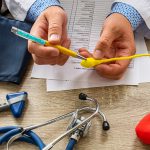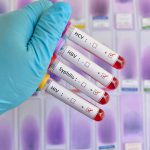Male Infertility
Shawn E. White, MD, FACS has a special interest and experience in male infertility. To make an appointment with Dr. White please call our office at (610) 372-8995 during normal working hours.
As a regional medical practice, Dr. White works in conjunction with Women’s Clinic regarding patients with fertility issues. The Women’s Clinic is located in West Reading, PA.
The information provided below is physician developed and reviewed as is current as of the posting date of October 2011. The material is copyrighted by Health Communities.com with all rights reserved.
Overview of Male Infertility
Infertility is the inability to conceive after at least one year of unprotected intercourse. Since most people are able to conceive within this time, physicians recommend that couples unable to do so be assessed for fertility problems.
In men, hormone disorders, illness, reproductive anatomy trauma and obstruction, and sexual dysfunction can temporarily or permanently affect sperm and prevent conception. Some disorders become more difficult to treat the longer they persist without treatment
Sperm development (spermatogenesis) takes place in the ducts (seminiferous tubules) of the testes. Cell division produces mature sperm cells (spermatozoa) that contain one-half of a man’s genetic code. Each spermatogenesis cycle consists of six stages and takes about 16 days to complete. Approximately five cycles are needed to produce one mature sperm. Energy-generating organelles (mitochondria) inside each sperm power its tail (flagellum) so that it can swim to the female egg once inside the vagina. Sperm development is ultimately controlled by the endocrine (hormonal) system that comprises the hypothalamic-pituitary-gonadal axis.
Because sperm development takes over 2 months, illness that was present during the first cycle may affect mature sperm, regardless of a man’s health at the time of examination.
Incidence and Prevalence of Male Infertility
According to the National Institutes of Health, male infertility is involved in approximately 40% of the more than 2 million infertile married couples in the United States. One-half of these men experience irreversible infertility and cannot father children, and a small number of these cases are caused by a treatable medical condition.
Patient Information about Male Infertility
Infertility is the inability to achieve pregnancy after trying to conceive for at least 1 year. Infertility can affect both men and women and can have a number of different causes. Male infertility diagnosis usually involves evaluating the couple’s reproductive-fertility history and performing a physical exam and laboratory tests, such as semen analysis.
Male infertility risk factors and causes include certain medical conditions (e.g., diabetes, kidney disease), hormonal disorders (e.g., testosterone deficiency), reproductive tract obstructions, injuries that result in reproductive system damage, sexual dysfunction (e.g., impotence), and medications (e.g., chemotherapy) that affect the sperm (male sex cells). Causes for male infertility may be congenital (present at birth) or may develop later (acquired).
Here are some questions to ask your doctor (e.g., urologist, fertility specialist) about infertility and male infertility treatment. Print this page, check the questions you would like answered, and bring it with you to your next appointment. Infertility treatments, such as assisted reproduction (e.g., IVF), drug therapy, and surgery, can make conception possible for about 50% of men who are infertile.
Questions to Ask Your Doctor about Male Infertility
- What are the common causes for male infertility?
- What do you suspect is the cause for my infertility?
- What does male infertility diagnosis involve?
- What types of diagnostic tests will be used to determine the underlying cause?
- About how long will this process take?
- What do male infertility tests involve?
- How should I prepare for these tests?
- When will the test results be available?
Date: - Should I call for the results or will someone contact me?
Telephone number to call: - Who will discuss the test results with me?
Physician/Specialist: - Do you recommend that my partner also undergo fertility testing? Why or why not?
- If so, what might this testing involve?
- Is my infertility the result of a congenital condition or an acquired condition?
- Might my fertility change over time with or without treatment?
- Is the cause for my infertility treatable?
- If so, what might male infertility treatment involve?
- Might assisted reproduction, drug therapy, and/or surgery for male infertility be recommended? If so, what do these treatments involve?
- Without treatment, what are the chances that my partner and I will be able to conceive?
- With treatment, what are the chances that my partner and I will be able to conceive?
- Might lifestyle changes be beneficial? Why or why not?
- If so, what lifestyle changes do you recommend?
- What type of male infertility treatment do you recommend?
- Why do you recommend this treatment?
- What are the benefits, disadvantages, and possible risks of this fertility treatment?
- What is the pregnancy success rate following this treatment?
- What is the live birth rate following this treatment?
- If this treatment is not successful, what other types of treatment are available?
- Do you recommend complementary and alternative treatments for infertility? Why or why not?
- If so, what do these treatments involve?
- What is the usual cost for infertility treatment?
- Are these costs usually covered by insurance?
- If not, what types of payment plans are available?
- Can male infertility be prevented? If so, what does infertility prevention involve?
- Can you recommend a local or online support group or a counselor who specializes in male infertility?
- Can you recommend additional sources for information about male infertility?
- Next appointment:
Physician/Specialist:
Date: Time:
Male Infertility Causes
Causes and Risk Factors for Male Infertility
Common causes for male infertility are impaired sperm production, impaired sperm delivery, and testosterone deficiency (hypogonadism).
Infertility can result from a condition that is present at birth (congenital) or can develop later (acquired). Causes for infertility include the following:
- Chemotherapy
- Defect or obstruction in the reproductive system (e.g., cryptorchidism, anorchism)
- Disease (e.g., cystic fibrosis, sickle cell anemia, sexually transmitted disease [STD ])
- Hormone dysfunction (caused by disorder in the hypothalamic-pituitary-gonadal axis)
- Infection (e.g., prostatitis, epididymitis, orchitis)
- Injury (e.g., testicular trauma)
- Medications (e.g., to treat high blood pressure , arthritis)
- Metabolic disorders such as hemochromatosis (affects how the body uses and stores iron)
- Retrograde ejaculation (i.e., condition in which semen flows backwards into the bladder during ejaculation)
- Systemic disease (e.g., high fever, infection, kidney disease)
- Testicular cancer
- Varicocele
Retrograde ejaculation occurs when impairment of the muscles or nerves of the bladder neck prohibit it from closing during ejaculation. It may result from bladder surgery, a congenital defect in the urethra or bladder, or disease that affects the nervous system. Diminished or “dry” ejaculation and cloudy urine after ejaculation may be signs of this condition.
Testosterone Deficiency
Hypogonadism may be present at birth (congenital) or may develop later (acquired). Causes of the condition are classified according to their location along the hypothalamic-pituitary-gonadal axis:
- Primary, disruption in the testicles
- Secondary, disruption in the pituitary gland
- Tertiary, disruption in the hypothalamus
The most common congenital cause is Klinefelter syndrome. This condition, which is caused by an extra X chromosome, results in infertility, sparse facial and body hair, abnormal breast enlargement (gynecomastia), and smaller than normal testes.
Congenital hormonal disorders such as leutenizing hormone-releasing hormone (LHRH) deficiency and gonadotropin-releasing hormone (GnRH) deficiency (e.g., Kallmann syndrome) also may cause testosterone deficiency.
Other congenital causes include absence of the testes (anorchism; may also be acquired) and failure of testicles to descend into scrotum (cryptorchidism).
Acquired causes for testosterone deficiency include the following:
- Chemotherapy
- Damage to the pituitary gland, hypothalamus, or testes
- Glandular malformation
- Head trauma affecting the hypothalamus
- Infection (e.g., meningitis, syphilis, mumps)
- Isolated LH deficiency (e.g., fertile eunuch syndrome)
- Radiation
- Testicular trauma
- Tumors of the pituitary gland, hypothalamus, or testicles
Male Infertility Diagnosis
The search for the cause of infertility usually begins with the male, because male examination and testing is less complicated. A thorough examination and a review of the man’s medical and surgical history are necessary, because chronic disease, pelvic injury, childhood illness, abdominal or reproductive organ surgery, recreational drug use, and medications can affect fertility. Physical examination may detect testicular irregularities (e.g., varicocele, absence of vas deferens, tumor), evidence of hormonal disorders (e.g., underdeveloped reproductive organs, enlarged breast tissue), or evidence of testosterone deficiency.
Assessing reproductive-fertility history is important; specialists typically inquire about the following:
- Early puberty (may result from hormonal disorder)
- Late puberty (may result from Kallmann’s syndrome)
- Previous pregnancy
- Sexual intercourse timing (understanding ovulation)
- STDs (can cause scarring, obstruction)
- Use of lubricants (may kill sperm)
A semen analysis, usually performed by a fertility specialist, is used to examine the entire ejaculate, because seminal fluid can affect sperm function and movement. Generally, three semen samples are taken at different times to account for variables such as temperature and error. Most specialists prefer three samples that differ no more than 20% from one another before proceeding with diagnosis.
Six sperm factors are analyzed in semen analysis:
- Concentration (sperm/milliliter; cc)
- Morphology (sperm shape; normal structure associated with sperm health)
- Motility (or mobility; % sperm movement)
- Standard semen fluid test (thickness, color)
- Total motile count (total number of moving sperm)
- Volume (total volume of ejaculate)
Azoospermia is the absence of sperm in the semen. Men with normal reproductive tracts and hormone systems can have azoospermia due to a lack of sperm-producing tissue in the testes or an obstruction. Obstructions can be viewed with x-ray. The World Health Organization has established criteria for normal sperm concentration, morphology, and motility. Total motile sperm count, which should be about 40 million, is calculated by multiplying volume by concentration by motility.
The semen fluid test looks at factors that may impede sperm performance. Abnormally thick semen may cause sperm to swim more slowly through cervical mucus, obstructing fertilization. Abnormal sperm shape (i.e., disfigured or multiple heads or tails) usually indicates poor sperm health. Infertility is likely if 60% or more of sperm in semen is abnormally shaped.
Other tests are concerned specifically with sperm’s ability to swim through cervical mucus and bind to and penetrate an egg. The postcoital Sims-Huhmer, or sperm-mucus interaction test, examines whether the sperm are able to swim through the female reproductive tract. This ability is referred to as forward progression. In the middle of the menstrual cycle, the cervical mucus becomes watery. Intercourse is recommended during this time, followed, the next day, with an inspection of the mucus to determine if
- enough semen was delivered to the cervix;
- sperm are healthy and do not show large numbers of clumped, motionless, or dead cells; and
- sperm are swimming energetically through the cervical mucus./li>
The sperm penetration assay (SPA), or sperm-oocyte interaction test, examines the ability of sperm to penetrate the egg by combining it with a hamster egg. The immunobead test looks at semen for the presence of antibodies that damage sperm.
Post-ejaculation urinalysis may identify diseases that affect fertility, such as kidney disease, diabetes, and repeated urinary tract infection (UTI). Blood tests identify disorders that impair testosterone and sperm production.
Semen Analysis & Male Infertility
Semen analysis is used to evaluate male fertility—a man’s ability to reproduce. This test, which also is called a sperm count, is used to measure the amount and quality of seminal fluid or ejaculate. Seminal fluid contains male reproductive cells (semen or sperm) and normally is expelled through the penis during ejaculation (sexual climax; orgasm).
Semen analysis also can be used to help diagnose Klinefelter’s syndrome, which is the most common congenital (inherited) cause for testosterone deficiency. This condition, which is caused by an extra X chromosome, results in male infertility (inability to conceive after one year of unprotected intercourse), sparse facial and body hair, abnormal breast enlargement (gynecomastia), and small testes. In most cases, at least two sperm counts are performed following vasectomy to look for sperm in the semen.
Semen analysis usually is performed by a fertility specialist. Seminal fluid can affect factors such as sperm shape, function, and movement, so the entire ejaculate is examined.
Prior to semen analysis, ejaculation should be avoided for 2–3 days. The semen sample can be collected in a sterile glass container through masturbation (i.e., sexual stimulation) or through sexual intercourse using a special type of condom provided by the physician.
The sample must be analyzed within 1–2 hours to provide accurate results. Many specialists require three different semen samples to account for factors that can affect results, such as variations in temperature and laboratory errors. It often is recommended that the results of the tests do not vary by more than 20%.
Semen analysis includes the following factors:
- Volume (total volume of ejaculate)
- Standard semen fluid test (e.g., thickness, color, acidity)
- Concentration (sperm count; sperm/mL)
- Morphology (sperm shape and structure; associated with sperm health)
- Motility (% of sperm that show forward movement; mobility)
- Total motile count (total number of moving sperm)
Normally, seminal fluid is clear to milky white in color, thick and sticky (viscous) in consistency, has a pH (acidity) level between 7.8 and 8.0, and contains few or no white blood cells (leukocytes).
The World Health Organization (WHO) has developed the following values for normal semen analysis:
- Total volume—greater than 2 mL
- Concentration—at least 20 million sperm per mL
- Morphology—at least 15% normal sperm
- Motility—greater than 50% sperm with forward movement, or 25% with rapid movement within 1 hour of ejaculation
- White blood cells—fewer than 1 million per mL
- Further analysis (sperm mixed antiglobulin reaction [MAR] test) shows adherent particles in less than 10% of sperm
According to the National Institutes of Health (NIH), approximately 1 couple in 6 has difficulty conceiving. It is estimated that male infertility is a factor in about 30–40% of these cases. The most common cause for infertility in men is an enlarged mass of veins in the spermatic cord within the scrotum (called varicocele). The spermatic cord is made up of veins, arteries, lymphatic vessels, nerves, and the duct that carries sperm from the testes to the seminal vesicles (vas deferens).
Overall, varicocele contributes to approximately 40% of male infertility cases. In men who have fathered a child but are no longer able to do so (a condition called secondary infertility), varicocele is the cause in as many as 80% of cases. Surgery to correct varicocele (called varicocele repair or varicocelectomy) can improve the shape and structure (morphology) of sperm. Following varicocele repair, approximately 50% of men are able to father a child within the first year.
Although semen analysis often can suggest male infertility, the results may not identify the cause for the condition. Additionally, some men with low sperm counts are able to reproduce (i.e., are fertile). In many cases, abnormal semen analysis results require additional testing.
Male Infertility Treatment
At least one-half of male fertility problems can be treated so that conception is possible. There are three categories of treatment for male infertility:
- Assisted reproduction
- Drug therapy
- Surgery
Assisted reproduction therapy includes methods to improve erectile dysfunction, induce ejaculation, obtain sperm, and inseminate an egg:
- Electroejaculation
- Sperm retrieval and washing
- In vitro fertilization (IVF)
- Intracytoplasmic sperm injection (ICSI)
- Gamete intrafallopian transfer (GIFT)
Electroejaculation
This procedure can be used to produce ejaculation when neurological dysfunction prevents it. An electrical rectal probe generates a current that stimulates nerves and induces ejaculation; semen dribbles out through the urethra and is collected. Retrograde ejaculation is associated with the procedure and sodium bicarbonate is usually taken the day before to make the urine alkaline (nonacidic) and nondetrimental to sperm. Candidates for electroejaculation include men who have undergone testis removal (orchiectomy), retroperitoneal lymph node dissection (RPLND), and those with spinal cord injuries.
Sperm Retrieval
This technique is used to obtain sperm from the testes or epididymis when obstruction, congenital absence of the vas deferens, failed vasectomy reversal, or inadequate sperm production causes azoospermia. Using a technique called micro epididymal sperm aspiration (MESA), a surgeon makes an incision in the scrotum and gathers sperm from the epididymis, the elongated, coiled duct that provides for the maturation, storage, and passage of sperm from the testes. Percutaneous epididymal sperm aspiration (PESA, or fine needle aspiration) is similar to MESA but does not involve microsurgery. A physician uses a needle to penetrate the scrotum and epididymis and draws sperm into a syringe. Testicular sperm extraction (TESE), the removal of a small amount of testicular tissue, is used to retrieve sperm from men with impaired sperm production, or when MESA fails. (see also Testis Biopsy)
These procedures are done under local anesthesia, usually take about 30 minutes, and may cause pain and swelling.
Sperm Washing
This procedure isolates and prepares the healthiest sperm for insemination. Sperm and washing medium are combined and spun rigorously (centrifuged) and the process is repeated if necessary. The process separates sperm from white blood cells and fatty acids (prostaglandins) in the semen that may hinder sperm motility. It also concentrates sperm, which increases the chance for conception.
Sperm retrieved by MESA, PESA, or TESE may be used in in vitro fertilization (IVF) and intracytoplasmic sperm injection (ICSI). IVF involves combining eggs with sperm in a laboratory, providing proper fertilization conditions, and transferring the resulting embryos to the uterus. To retrieve an egg, a specialist uses ultrasound to guide a fine needle through the vaginal wall and into the ovary or makes an incision in the abdomen to get to the ovary (laparoscopy). Once the eggs are retrieved, they are combined with prepared sperm in a sterile dish for 2 to 4 days. After fertilization, the embryos are transferred to the uterus. IVF is used most commonly for infertility caused by female reproductive abnormalities.
Intracytoplasmic sperm injection (ICSI) may be used with immotile sperm during in vitro fertilization. Using a tiny glass needle, one sperm is injected directly into a retrieved mature egg. The egg is incubated and transferred to the uterus.
Fertilization occurs in 50% to 80% of cases and approximately 30% result in a live birth. The egg may fail to divide or the embryo may arrest at an early stage of development. Younger patients achieve more favorable results and poor egg quality and advanced maternal age result in lower success rates.
ICSI does not increase the incidence of multiple pregnancies. Long-term information about the health and fertility of children conceived through this procedure is not available because it was first performed in 1992.
While excess sperm from MESA or PESA can usually be frozen for future use, most TESE-derived sperm are not of sufficient quality or quantity for frozen storage (cryopreservation). Multiple MESA or PESA procedures are not recommended, since repetition can lead to scarring.
Gamete Intrafallopian Transfer (GIFT)
This procedure is recommended for couples with unexplained fertility problems and normal reproductive anatomy. Mature eggs and prepared sperm are combined in a syringe and injected into the fallopian tube using laparascopy. Embryos that result from this procedure naturally descend into the uterus for implantation.
Average conception rate for these procedures is about 30%.
Drug therapy for male infertility includes medications to improve sperm production, treat hormonal dysfunction, cure infections that compromise sperm, and fight sperm antibodies. The administration of testosterone is similar to that used to treat testosterone deficiency. Tamoxifen (Nolvadex®), an antiestrogen agent, may be used to stimulate gonadotropin (a male hormone) release, which leads to testosterone production. Antibiotics, like levofloxacin (Levaquin®) and doxycycline (Periostat®), are used to treat fertility-impairing infections of the urinary tract, testes, and prostate, and STDs.
Surgery for male infertility is performed to treat reproductive tract obstruction and varicocele. Vasoepididymostomy is a microsurgical procedure that corrects obstruction in the coiled tube that connects the testes with the vas deferens (epididymis). Obstructions commonly result from STDs and also include cysts and tubal closure (atresia), which is usually genetic. Vericocelectomy, the removal of a varicocele from the testes, often results in increased sperm count.
Male Infertility Alternative Treatment
Naturopathic Treatment for Male Infertility
Naturopathic treatment for male infertility focuses on improving sperm quantity, sperm quality, and overall male reproductive health. Researchers reported that sperm counts have fallen almost 50% since the 1930s. Although some dispute these findings, it is generally accepted that sperm counts are declining. The cause may be environmental and dietary and lifestyle changes may interfere with men’s sperm production. If this is so, improving diet and making healthy lifestyle choices should positively impact male reproductive health.
Male Infertility & Nutrition
The importance of a healthy diet cannot be overstated. To function properly, the reproductive system requires the proper vitamins and minerals. Nutritional deficiencies can impair hormone function, inhibit sperm production, and contribute to the production of abnormal sperm.
- Eat a natural foods diet that focuses on fresh vegetables, fruits, whole grains, fish, poultry, legumes, nuts, and seeds.
- Drink 50% of body weight in ounces of water daily (e.g., a 150 lb man would drink 75 oz of water).
- Eliminate processed and refined foods (e.g., white flour), junk food, sugars, alcohol, and caffeine.
- Avoid saturated fats and hydrogenated oils (e.g., margarine); use olive oil.
- Pumpkin seeds are naturally high in zinc and essential fatty acids which are vital to healthy functioning of the male reproductive system. Eat pumpkin seeds to help maintain a healthy reproductive system.
Male Infertility & Supplements
The following supplements may increase sperm count and/or motility. Allow 3–4 months for the supplements to work.
- Arginine—Take 4 gr daily. Needed to produce sperm. If the sperm count is below 10 million per ml, arginine probably will not provide any benefit.
- Coenzyme Q10—Take 10 mg daily. Increases sperm count and motility.
- Flaxseed oil—Take 1 tbsp daily. Is a source of essential fatty acids.
- L-carnitine—Take 3–4 grams daily. Required for normal sperm function.
- Multivitamin-mineral—Buy a high-quality product and take one serving size (differs from brand to brand).
- Selenium—Take 200 mcg daily. Improves sperm motility.
- Vitamin B-12—Take 1000 mcg daily. A B-12 deficiency reduces sperm motility and sperm count. Even if no deficiency exists, B-12 supplementation may help men with a sperm count of less than 20 million per milliliter or a motility rate of less than 50%
- Vitamin C—Take 500 mg 2 times daily. Is an antioxidant.
- Vitamin E—Take 400 IUs 2 times daily. Is an antioxidant and improves sperms’ ability to impregnate.
- Zinc—Take 30 mg 2 times daily. Required for a healthy male reproductive system and sperm production.
Male Infertility & Herbal Medicine
Herbal remedies usually do not have side effects when used appropriately and at suggested doses. Occasionally, an herb at the prescribed dose causes stomach upset or headache. This may reflect the purity of the preparation or added ingredients, such as synthetic binders or fillers. For this reason, it is recommended that only high-quality products be used. As with all medications, more is not better and overdosing can lead to serious illness and death.
The following herbs may be used to treat male infertility:
- Ginseng (Panax ginseng)—Known as a male tonic (an agent that improves general health) and used to increase testosterone levels and sperm count. Siberian ginseng (Eleutherococcus senticosus) may also be used.
- Astragalus (Astragalus membranaceus)—Increases sperm motility.
- Sarsaparilla (>Smilax spp.)—Known as a male (and female) tonic.
- Saw palmetto (Serenoa repens)—Used for overall male reproductive health.
Other Recommendations
- Avoid alcohol. Alcohol consumption is associated with an increased number of defective sperm.
- Consider acupuncture.
- Do not smoke, or quit smoking. There is an association between smoking and low sperm count, poor sperm motility, and abnormal sperm.
- Proxeed is a nutritional supplement that may improve sperm health and fertility rates. The ingredients include L-carnitine and acetylcarnitine, two vitamin-like substances synthesized naturally by the body. These chemicals are involved in cellular metabolism and are found in semen at a rate that is proportionate to the amount of healthy sperm. Proxeed improves sperm count, concentration, and motility when taken orally for about 2 months. Approximately 30% of couples using it experience pregnancy. It is available without a prescription, although couples considering it should consult their physician.






